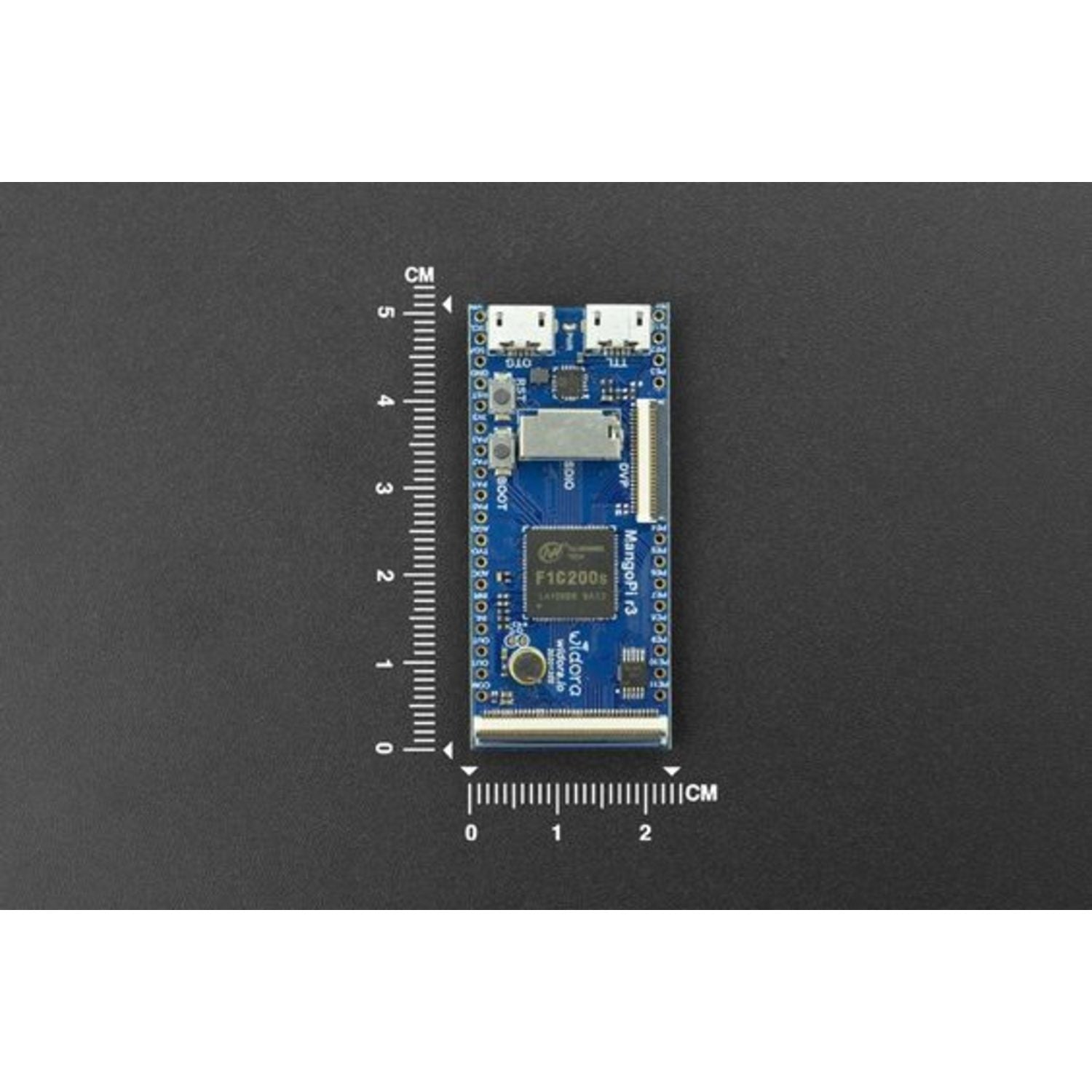This compact micro development board is tailor - made for running Linux. Despite its small size, it packs all the essential functions. Powered by the F1C200S main - control chip, it comes with a wide range of common peripheral ports, including GPIO, I2C & SPI, SDIO, audio ports for recording and playing, video interfaces (RGB565 display, touch, DVP), USB Host, and OTG. With a built - in 64MB DDR and on - board 128MB Nand Flash, it fully supports the Linux ecosystem and can run complete Python. Currently, it offers high openness, allowing users to compile any module as needed. It's mainly aimed at Python developers and senior enthusiasts due to its slightly steep learning curve. Ideal for Python developers and Internet engineers, it enables easy hardware control through Python. Features include low power consumption, a 420 MHz default system clock frequency (up to 700 MHz), rich GPIO pins, an onboard mic and audio amplifier, RGB565 display and 6 - wire touch interfaces, DVP camera interface for cameras like OV2640 and GC0328, and support for SDIO WiFi + BT module. Documentation includes a product wiki. The shipping list has one MongoPi - R3 Development Board and one accessories package.

Using the MongoPi - R3 Development Board is quite straightforward. First, connect it to the power source. Then, you can connect various external devices through its peripheral ports according to your needs. For example, if you want to use a camera, connect it to the DVP interface. To start programming, you can use Python. Keep in mind that as this board is a bit challenging for beginners, you might need to refer to the product wiki for help. When it comes to maintenance, make sure to keep the board in a dry and clean environment. Avoid exposing it to extreme temperatures or humidity. Also, handle it gently to prevent any physical damage. If you encounter any problems, always check the connections first and then refer to the documentation.